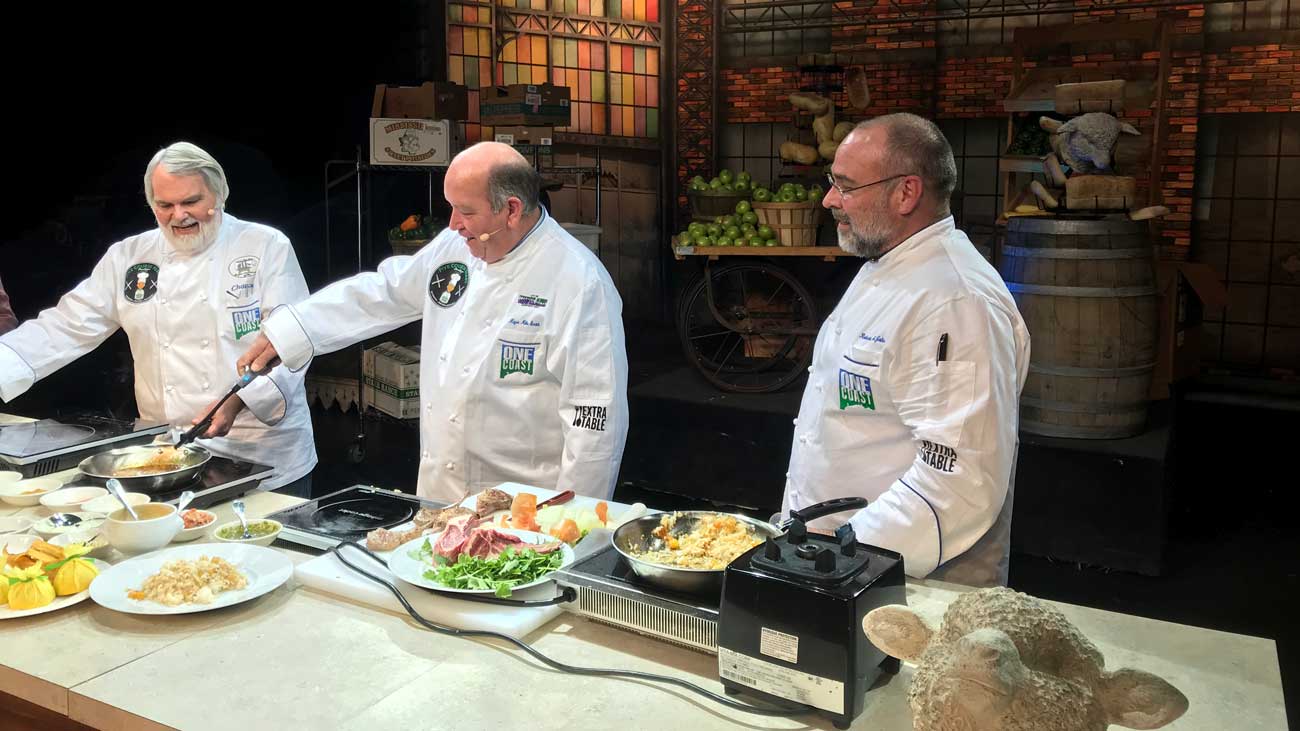“Rusty, get out those sandwiches I got at the gas station. I’m so hungry I could eat a sandwich from a gas station.” – Clark Griswold, “National Lampoon’s Vacation”
I spent six years of my life eating gas station sandwiches.
My elementary school had a line-‘em-up-with-a-tray-and-go-through-the-line-and-get-a-room-temperature-half-pint-of-milk-and-eat-greens-on-the-day-they-mowed-the-grass type cafeteria.
My junior high and high school had a wait-in-line-to-get-a-microwave-sandwich-or-small-cheap-floppy-pizza-and-wash-it-down-with-a-bottle-of-Coke-from-the-drink-machine type cafeteria.
The only food the cafeteria at the small, underfunded private school offered were those same microwavable sandwiches they sell at gas stations. That, along with really bad pizza, was what we ate every day for lunch, and we loved it. Dessert wasn’t Jell-O or fruit cobbler like they had at the elementary school cafeteria, but an oatmeal creme pie from the vending machine.
Microwaves were new in the mid to early 1970s and my mother was suspicious of anything that cooked food so quickly. She had seen something on 60 Minutes or in Time magazine, “You’re going to turn green one of these days from eating those radiation-wave filled gas-station sandwiches!” My friends and I considered ourselves lucky as opposed to the kids that went to public schools who had to eat “cafeteria food.” As a parent I cringe a little at that memory.
I’ve been thinking about that school cafeteria and the gas-station sandwiches a lot lately. We just came out of the honeymoon period at a new restaurant concept we opened in January. For months before the restaurant opened I was eating burgers, fries, tots, and chili while researching and developing recipes. After we opened— and for the next two months I ate burgers, fries, tots, and chili as we were fine tuning the recipes, training staff, and tweaking our menu offerings. I was working 16-hour days for a period and eating burgers morning, noon, and night.
Two months into that process I started craving lighter foods, namely sushi. The restaurant was still in a honeymoon period so I couldn’t stray too far from home base. One day I walked back to the Corner Market grocery store located directly behind the restaurant looking for something other than burgers. In what they call the deli section where they serve up meat-and-three plate lunches and breakfast, and there was a refrigerated sushi display. Am I hungry enough to eat sushi from a grocery store? I asked myself. After having sampled several rounds of chili-cheese tots, bacon-cheddar-ranch tots, and buffalo tots all morning the answer was a resounding, Yes, today is the day.
Grocery store sushi is surprisingly good. At least the grocery store sushi at Corner Market is surprisingly good. For six or seven bucks I got a spicy shrimp roll, wasabi, soy sauce, ginger, and chopsticks. It was so good I went back the next day and picked up a spicy tuna roll to eat at my desk. The next day I grabbed a couple of orders of sushi rolls to take home, but never got to eat them before the human garbage disposal that is my 14-year old son inhaled them in a matter of minutes. “Dad, we need to keep some of these rolls in the fridge all of the time.”
A week later I was with my family in the Florida Panhandle for Spring Break. We were shopping at a very nice Publix grocery store, and my son said, “Dad, they’ve got sushi over there. Get some.” The Publix grocery-store sushi was very good. But it wasn’t any better than the grocery-store sushi I get back home at the Corner Market. It turns out that grocery-store sushi is a perfect snack to keep in the refrigerator at the beach.
There is a caveat. Grocery-store sushi will make you live like a European. One must buy the sushi at the store, keep it refrigerated, and eat it within a few hours. It’s ok the next day, and— even though Corner Market puts out a fresh batch twice a day— the quality drops quickly once it’s held overnight.
So there’s a new addiction in town for this overly compulsive fool-for-a-new-food-trend eater: grocery-store sushi. It’s good. It’s not great, but who expects Nobu in the deli department of a grocery store? For sheer convenience and price the grocery-store sushi at Corner market can’t be beat.
At the risk of losing all of my culinary and fine-dining credibility I will also admit that I miss those cafeteria microwave pizzas. They were bad. Really, really bad. But if one eats something long enough (and six years is long enough), that bad thing becomes a fond memory. I have eaten pizza— and very good pizza— all over the world. We serve pizza in our Italian concept. It’s thin and made with high-quality ingredients just like they make it at Ristorante L’Archibugio in Barberino Val D’Elsa, Italy. And it’s true that I haven’t had one of those cafeteria Microwave pizzas in 37 years. But I remember them fondly and there are times these days when I am, like Clark Griswold, so hungry I could eat a meal from a wait-in-line-to-get-a-microwave-sandwich-or-small-cheap-floppy-pizza-and-wash-it-down-with-a-bottle-of-Coke-from-the-drink-machine type cafeteria.
Grilled Shrimp and Pesto Pizzas
2 Tbl olive oil
3/4 pound fresh shrimp, small
1 tsp Old Bay Seasoning
2 tsp black pepper, freshly ground
1 Tbl garlic, minced
1 1/2 cups button mushrooms, sliced thin
1/2 cup red bell peppers, chopped fine
1/2 cup red onion, chopped fine
1/2 cup green onion, chopped fine
6 Pizza Crusts, homemade, prepared and pre-grilled
2 Tbl olive oil
1 1/2 cup Fresh Pesto (recipe follows)
1 1/2 cup mozzarella cheese, shredded
1 cup Jalapeño Jack Cheese, shredded
3/4 cup cheddar cheese, shredded
1/2 cup Parmesan cheese, freshly grated
In a large skillet, heat olive oil over medium heat. Season the shrimp with the Old Bay and black pepper and cook for 2 minutes. Add the garlic, mushrooms, peppers, and red onion and cook for 6-8 more minutes. Remove from heat and stir in the green onions. Cool slightly (may be prepared a day in advance).
Spread the pesto evenly on top of each prepared pizza crust. Distribute the shrimp mixture over the pesto. Combine the cheeses. Top each pizza with the cheese mixture. Continue to cook the pizzas over indirect medium heat or in a 400 degree oven until the topping is hot and the cheeses have melted.
Allow the pizzas to cool slightly before cutting.
Yield:
6-10 servings



